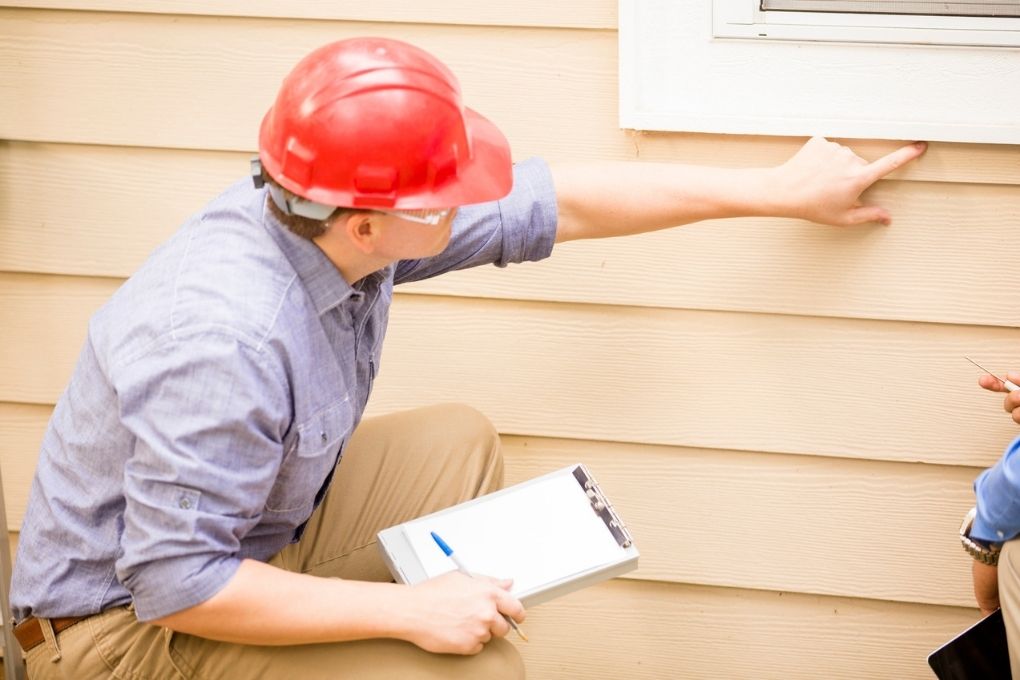What to Anticipate From Home Assessment: a Detailed Checklist and Its Relevance
Understanding what to anticipate from a home examination is essential for both buyers and vendors in the actual estate market. A detailed examination gives a thorough list that examines crucial elements such as structural integrity, significant systems, and general home condition.

Significance of Home Inspections
The importance of home assessments can not be overemphasized, as they function as an essential safeguard for both buyers and sellers in the real estate market. For buyers, a home evaluation offers an objective examination of the residential or commercial property's problem, exposing prospective problems that may not show up during a laid-back walkthrough. This process helps buyers make informed choices and bargain fixings or rate changes before closing, eventually safeguarding their investment.
Conversely, sellers can take advantage of home examinations by attending to problems proactively before listing their residential or commercial property. This can enhance the home's bankability and possibly speed up the sales process. A pre-listing inspection can additionally impart confidence in prospective customers, as it shows transparency and a dedication to keeping the residential property.
Moreover, home examinations add to the general safety and habitability of household homes. By identifying architectural, electrical, or plumbing concerns, they guarantee that homes follow safety and security requirements and regulations. This not just safeguards the owners yet additionally supports the stability of the realty market. In recap, home assessments are an important part of genuine estate transactions, supplying essential understandings that promote trust fund and transparency amongst all parties entailed.
Secret Elements of the Checklist
An extensive home examination checklist includes numerous key elements that make certain a comprehensive examination of a property's condition. The very first part is the structural integrity, that includes the assessment of the structure, walls, and roofing system for any type of indicators of damages or deterioration. Next, the checklist addresses major systems such as plumbing, electric, and cooling and heating, assessing their functionality and safety.
One more important location is the outside of the home, which entails inspecting siding, windows, doors, and roof covering products for wear and potential leakages. The checklist also covers interior elements, including flooring, wall surfaces, ceilings, and insulation, to determine any kind of concerns that might impact convenience or security.
Furthermore, the checklist typically consists of an examination of home appliances, ensuring they are in good working order. The evaluation should assess exterior areas, including decks, patios, and driveways, to review their problem and safety. Each of these components plays an essential function in offering a comprehensive understanding of the property, inevitably helping prospective customers in making informed choices regarding their investment.
Usual Problems Located
Commonly, home inspections disclose a range of concerns that can range from small repair services to significant safety and security issues. One widespread problem is the presence of water damages, frequently originating from leaking roof coverings, plumbing failings, or insufficient water drainage systems. Such damage can bring about mold growth, which postures health threats and may need extensive remediation.

One more usual finding includes electric systems. Outdated circuitry, overloaded circuits, or improper grounding can produce fire threats and necessitate instant focus. Additionally, problems with HVAC systems, such as insufficient upkeep or age-related inadequacies, can affect click to find out more convenience and power prices.
Structural issues like split structures or compromised framing are additionally regularly noted. These problems can cause serious consequences if not resolved promptly. Additionally, bugs such as rats or termites may be discovered, suggesting the capacity for substantial residential or commercial property damage.
Finally, the problem of doors and windows usually comes under scrutiny. Poor seals can result in energy loss, while damaged frames or glass can affect security and visual appeals. Determining these typical problems during a home evaluation is essential for notified decision-making and guaranteeing the security and longevity of the residential or commercial property.
Getting Ready For the Evaluation
Preparation is essential for a successful home examination, making certain that both customers and vendors can navigate the procedure with self-confidence. Begin by arranging the evaluation at a mutually hassle-free time, enabling appropriate ease of access to the home. For sellers, it is suggested to declutter and cleanse the home completely, as a tidy setting can positively affect the examiner's assessment.

For customers, preparing involves compiling a list of details worries or areas of interest to review with the assessor. It is helpful to go along with the inspector throughout the walkthrough, as this uses firsthand understanding into the residential or commercial property's condition. Last but not least, making sure that all utilities are functional can help the inspector in performing an extensive evaluation. By taking these primary steps, both celebrations can set the phase for a extensive and reliable home examination experience.
Post-Inspection Actions
After the evaluation is important link total, both vendors and customers must take specific actions to deal with the findings. For purchasers, the very first action is to very carefully assess the examination record, keeping in mind any major issues that may affect their decision.
Sellers, on the various other hand, should assess the findings to determine which issues they can address before finalizing the sale. Fixing small fixings can boost the property's appeal and possibly bring about a greater list price. Additionally, sellers may choose to divulge concerns to possible This Site purchasers, promoting transparency and trust.
In cases where substantial repairs are required, both parties might benefit from acquiring estimates or quotes from certified contractors. It is necessary for both sellers and customers to maintain open lines of interaction throughout this procedure to guarantee a smooth purchase.
Final Thought
Home examinations serve as an essential component in the genuine estate purchase process, making certain a comprehensive analysis of a home's problem. By adhering to a comprehensive list, possible issues can be determined, guarding the interests of both vendors and buyers. Addressing these issues not just boosts security and habitability yet also aids in economic arrangements. Inevitably, the importance of home evaluations can not be overstated, as they advertise educated decision-making and add to a smoother property experience.
For buyers, a home evaluation offers an unbiased examination of the residential property's problem, exposing prospective problems that may not be visible during a casual walkthrough.On the other hand, vendors can benefit from home evaluations by dealing with issues proactively before detailing their property (Home Inspection Lockhart).Commonly, home examinations disclose a range of problems that can range from small fixings to considerable security concerns. Identifying these usual problems during a home inspection is critical for educated decision-making and making sure the safety and longevity of the building
Prep work is important for an effective home assessment, ensuring that both sellers and customers can navigate the procedure with confidence.